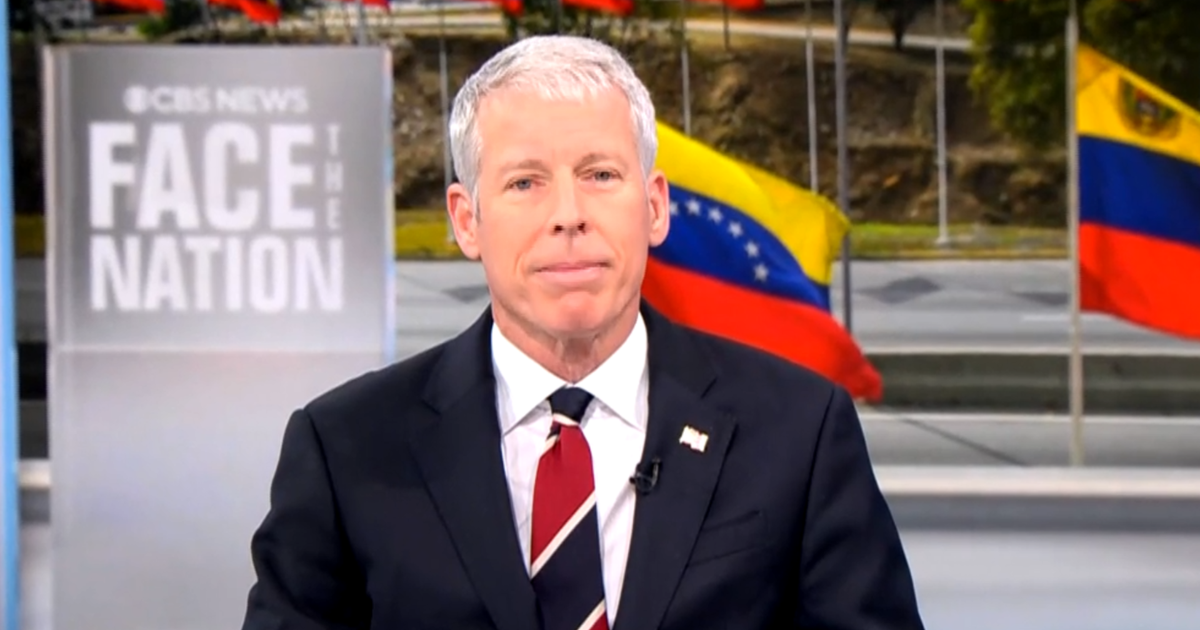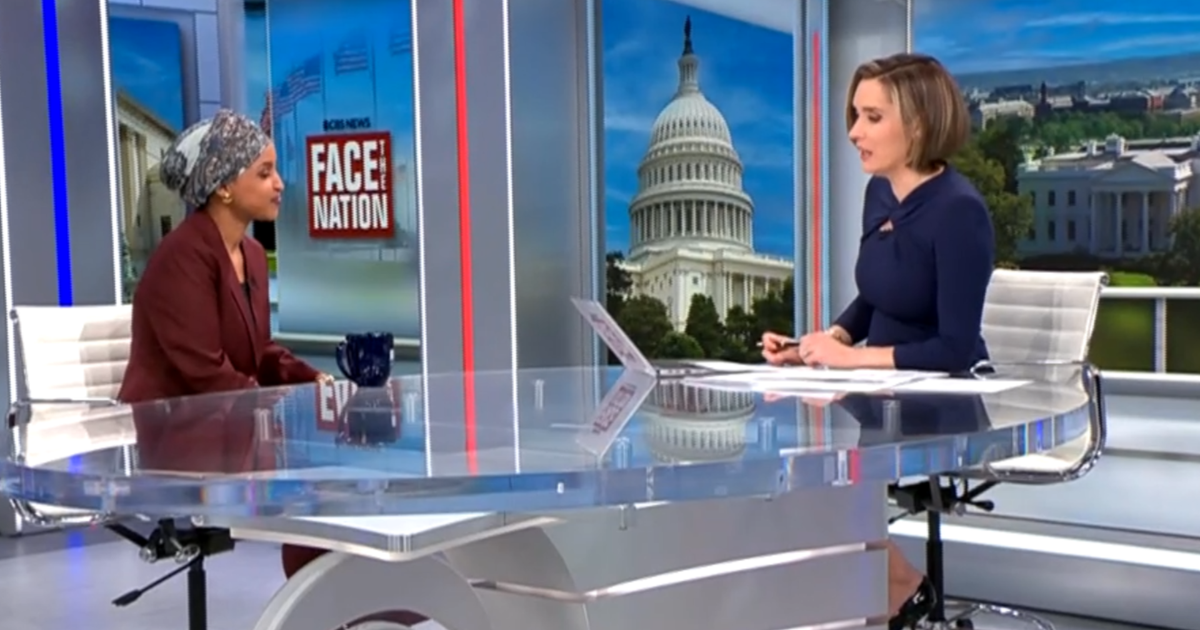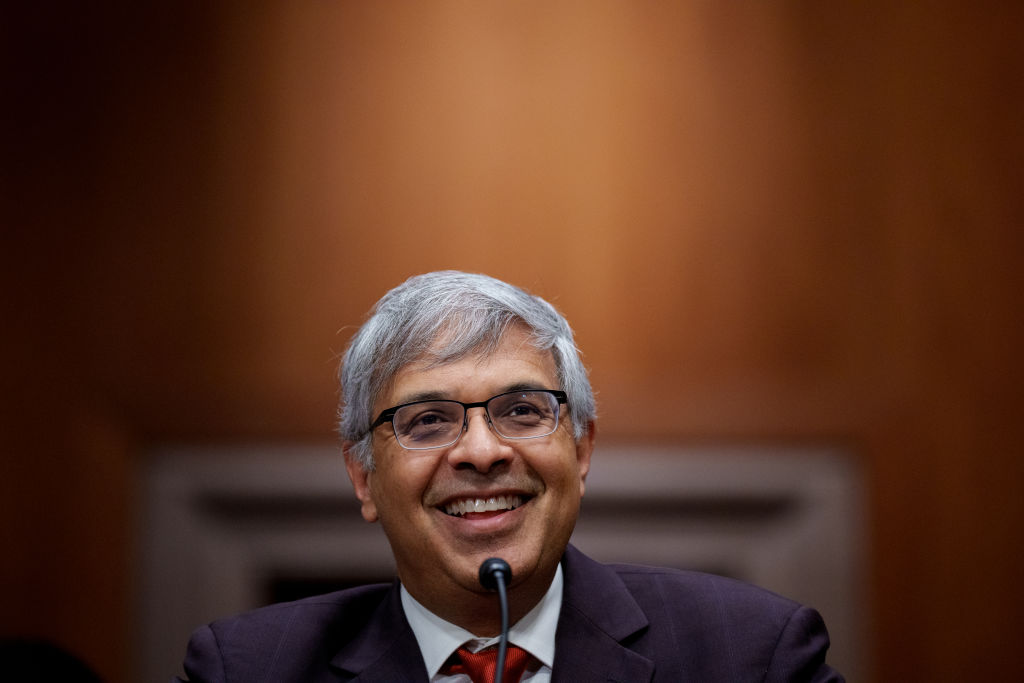Transcript: Scott Gottlieb on "Face the Nation," June 6, 2021
The following is a transcript of an interview with former FDA Commissioner Dr. Scott Gottlieb that aired Sunday, June 6, 2021, on "Face the Nation."
JOHN DICKERSON: We want to welcome back former FDA commissioner Dr. Scott Gottlieb to our studio. He has not been with us in person in Washington since March 2020. Dr. Gottlieb is also on the board of Pfizer and his upcoming book is 'Uncontrolled Spread: Why COVID-19 Crushed US and How We Can Defeat the Next Pandemic.' Welcome, Scott. Good to see you.
DOCTOR SCOTT GOTTLIEB: Thanks a lot.
JOHN DICKERSON: Very glad you're here. Let's begin with- this week thousands of emails of Dr. Anthony Fauci, the director of the National Institute of Allergy and Infectious Diseases, were released. What did you make of those emails?
DR. GOTTLIEB: I didn't think there was anything remarkable in those emails. I certainly don't think there was anything that Tony sent that expressed any ill intent and nothing really that was new from the standpoint of what we already knew. I do think, though, that some of the discussion that went on in those emails evidences a larger issue, which is that early on the email that's being focused on as a so-called smoking gun, if you will, is an email Tony received from some really good scientists suggesting that they felt this could have been an engineered pathogen early on. They were basing that assessment on their analysis of the sequence strain of the virus. So they were virologists looking at the virus itself. It was reasonable to draw conclusions based on an evaluation of the sequence because that was largely the best piece of information we had. As time evolved and as more virologists looked more carefully at this, the judgment of the scientific community is there's actually nothing that remarkable about this virus. All of the genetic diversity of seeing the virus could have been derived from nature. There are some unusual features, don't get me wrong, but they are still things that we could have found in nature. So their initial analysis was based on the analysis of the sequence. Their current analysis is also based on analysis of the sequence and what- what is lost in this is that there's a broader mosaic here. You know, we have other information now that fits into this picture. The science is one piece of information, but there's a lot of other information that points in the direction that this could have come out of a lab, that we need to have a broader view about the potential risk that this was a lab leak.
JOHN DICKERSON: So it seems like we've got two baskets of infor- one is we're all still trying to figure out how this started and these emails from the early period give us some window and insight into that. And- and that's what you're talking about, the virologists who made that--
DR. GOTTLIEB: Right.
JOHN DICKERSON: --initial determination. And then there's kind of a side political fight that's going on about Dr. Fauci. And the claim appears to be that- that he was not forthcoming about the idea that it might have been from a lab leak in his discussions within the administration and in the other work he was doing. And some people have looked at these emails and said that- that it suggests that.
DR. GOTTLIEB: Well I--
JOHN DICKERSON: Go ahead.
DR. GOTTLIEB: Yeah, I was told at that time back in the spring that Dr. Fauci had gone over to a meeting of world health leaders in Europe around the World Health Assembly, and actually brief them on the information that they were looking at, that this could have been a potential lab leak, that this strain looked unusual. So those discussions were going on. And I was told that by a very senior official in the Trump administration. I've reconfirmed that conversation. That happened, you know, at the time contemporaneously with- with that meeting over a year ago. So I think early on when they looked at the strain, they had suspicions. And in a closer analysis- and it takes time to do that analysis, dispelled some of those suspicions. But I think the broader issue here for me is that we look at these things through the lens of science and we don't necessarily look at it through the lens of national security and a scientific mindset looks at the virus and the virus's behavior and its sequence and draws a conclusion. A national security assessment looks at that as one piece of evidence, but then looks at the behavior of the Chinese government, looks at the behavior of the lab, looks at other evidence around the lab, including the infections that we now know took place, and that changes the overall assessment. So the virologists who are now still focused on saying, we don't think this was a lab source, they're still I think looking at this through the lens of what does the sequence look like, what does the virus look like? That is just one piece of evidence. And I think this is partly why these kinds of assessments need to be in the hands of the national security apparatus, not just the scientific community.
JOHN DICKESON: So because you've been focused, as we talked about last week, the whole reason this question of where it started from is important is not because it could have changed the way the US approached the virus at that time, but for what we do going forward. And so what it sounds like you're saying is that there were mistakes made not out of ill intent, but just a kind of too narrow view of how to look at these kinds of things. And if we're going to face another one of these, as we surely will, we need to, as a country, need to broaden our view.
DR. GOTTLIEB: I think that's right. Historically, the view it was the CDC has this.
JOHN DICKERSON: Yeah.
DR. GOTTLIEB: That this is responding to a pandemic or an outbreak, whether it's SARS one or Ebola or Zika was something that the CDC did. And so the- the tools of national security weren't deeply engaged at the outset. I think going forward now, looking at these kinds of risks, we need to judge them through the lens of a national security mindset. Public health preparedness is a matter of national security. And if you bring the national security officials in at the outset of these kinds of investigations, they look at the mosaic. They look at the totality of the evidence. Now, they- they will weigh heavily the judgment of the virologists and what is the sequence telling us, but they won't look at that as the only piece of evidence. And what I see in the emails that Tony Fauci was sending back and forth with the scientists where they were- they were debating the characteristics of the sequence. And once they assured themselves that the sequence looked fairly not normal, but things that were in it were things that could be found in nature and could be the result of just reassortment in nature, their belief that this could have been an engineered strain started to subside. And that's what you saw. You saw the evolution of that thinking. But that thinking was derived from looking at the virus itself.
JOHN DICKERSON: Right, not some other reason. Let me ask you about this term "gain of function." We've heard that come up in this, that gain-of-function research was going on at the lab and that that is somehow connected to the US government or even Dr. Anthony Fauci. What's your assessment of that?
DR. GOTTLIEB: Well, look, I- I don't think that gain-of-function research- if this did come out of a lab, so big if, it doesn't necessarily need to be the product of deliberate engineering. If they had a novel strain of coronavirus and we know that the WIV was the referral center for coronaviruses. So if the Chinese had discovered a novel strain of coronavirus, it probably would have been sent to the ER for further evaluation. We know that that Wuhan Institute of Virology was doing experiments where they were trying to infect transgenic animals, animals with fully human immune systems, to look at the behaviour of coronaviruses in people, in models.
JOHN DICKERSON: And they do that so that they can fight tougher--
DR. GOTTLIEB: Right. So they could figure out how it works and then they can try to develop drugs and vaccines against it. The process of doing that, the process of growing a vaccine in mammalian cell cultures, which is what they would have tried to do with that novel strain, and the process of then infecting transgenic animals would make it more humanized. So you don't need to deliberately try to engineer features into the virus to end up with a virus that you might have taken from an animal and then it became more humanized in the process of just experimenting with it. And we know that there were some outbreaks of unusual coronaviruses that the Chinese still haven't released. I mean, a real material fact here is the evidence that the Chinese government has not released. They- early on, they released a lot of information that really helped our response, particularly clinical information. But subsequent to that, they've held onto a lot of information.
JOHN DICKERSON: And probably will continue to. Dr Gottlieb, thanks for being with us.
DR. GOTTLIEB: Thanks a lot.
JOHN DICKERSON: Stay with us. We'll be right back.





